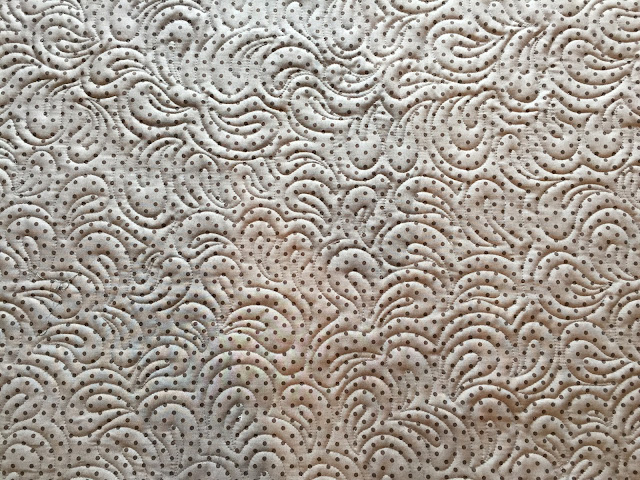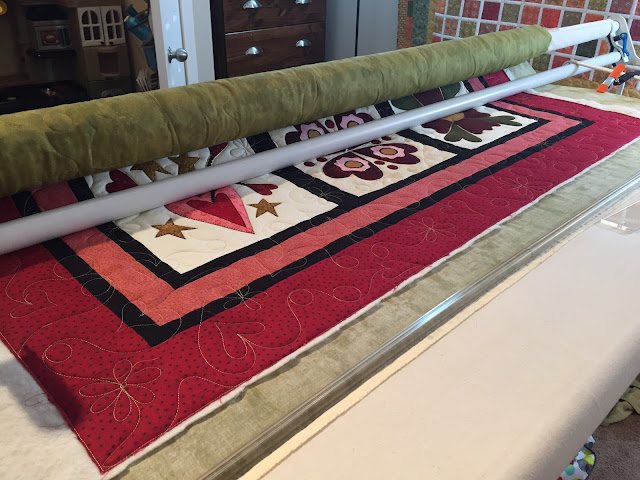I was recently approached by a dear quilting client, who asked if I could help her finish a quilt a little differently than in the past. This time she wanted to try and free-motion quilt it herself on her domestic sewing machine.
But when you're quilting on a home sewing machine, you have to baste your "quilt sandwich". In other words, you have to temporarily attach the three layers of the quilt - the quilt top, the batting/insulation, and the backing fabric - until you can get them quilted securely. On my longarm quilting machine, I roll the backing fabric onto a pair of bars and stretch it across my 12-foot frame. Then I just lay the batting and quilt top on top of the backing and start quilting.
But instead of mounting the quilt and moving the machine like I do on my longarm, on a domestic sewing machine (which I used to quilt on before purchasing a longarm) the machine stays still on your table and you move the fabric around. So you have to somehow secure those three layers - quilt top, batting, and backing - so that they'll stay in place as you stitch your way around the quilt.
There are a lot of methods for basting. I tried MANY of them - long hand-stitches with needle and thread, spray basting with a washable adhesive spray, safety-pin basting, plastic T-tags (like the ones they use to attach price tags to clothes at stores), heat-fusible batting - I mean LOTS. They all have advantages and disadvantages.
But the one thing that's pretty consistent is that you have to be able to lay out your entire quilt. I saw a method of rolling onto boards on YouTube once, but by then I had made my decision to move to a longarm setup and didn't ever pursue that idea.
My client Barb didn't really have the space to lay out her whole quilt - and plus, it's really a pain, crawling around on the floor trying to get everything flat and straight. So, this time, she hired me to baste it for her on my longarm.
I rolled it onto the frame, just like I do with all my quilting projects, and then I just put my machine on a really slow, manual stitch mode, and I dragged it across the width of the quilt every 6" from top to bottom. Just like hand-basting, I made really long stitches, and I actually made my thread tension a little off, intentionally. Once Barb gets an area securely quilted, she'll be able to snip a few stitches here and there, and then just pull those basting threads out easily.
This first attempt at basting was an experiment, but I think it turned out well. This would be a good resource for hand-quilters, too. I can think of a lot of useful applications. The only thing I didn't like about this project is that I didn't get to take it to its final, finished glory myself!





















































